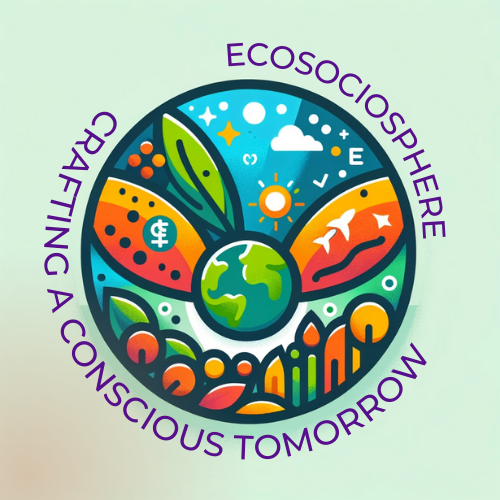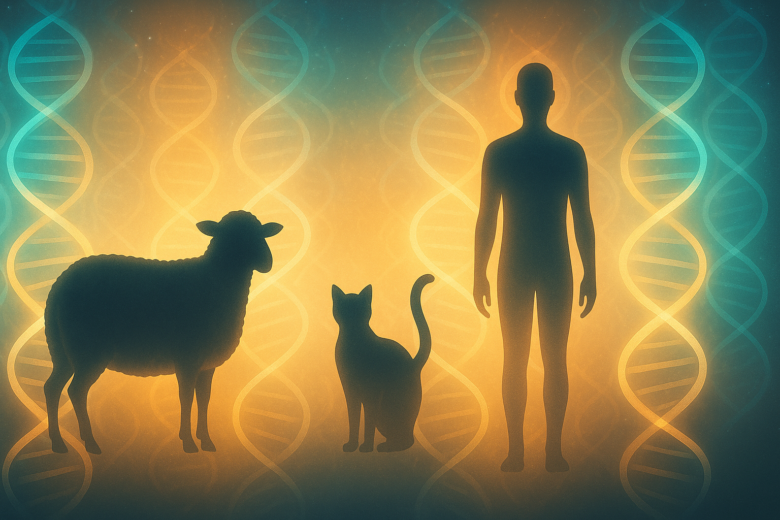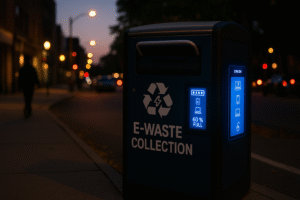Fun fact: The world’s first cloned mammal, Dolly the sheep, was born in 1996—and her birth changed science forever.
Once considered the stuff of science fiction and eccentric scientist tales, cloning has now firmly entered the realm of mainstream biology. And no, we’re not secretly growing armies of identical humans in underground labs. But we are cloning—and not just animals.
Today, we’re cloning cells, tissues, embryos, and even extinct species (sort of). So the real question isn’t “Can we clone?”—it’s “What are we cloning, and why?”
Let’s dive into the current reality of cloning technology, how it works, what’s already happening around the world, and why it’s forcing us to rethink everything from pet ownership to conservation to the very definition of individuality.
What Is Cloning, Really?
At its core, cloning is the process of creating an exact genetic copy of a biological entity. There are three main types:
- Gene Cloning: Copying segments of DNA (Deoxyribonucleic Acid)—used in labs for research and genetic engineering.
- Reproductive Cloning: Creating a whole animal that is genetically identical to another (like Dolly the sheep).
- Therapeutic Cloning: Growing tissues or organs from cloned cells for medical use—without creating a full organism.
Each serves a very different purpose, but all raise big questions about science, ethics, and identity.
Dolly: The Sheep That Started It All
Let’s go back to 1996, when researchers at the Roslin Institute in Scotland stunned the world by successfully cloning a sheep named Dolly through a technique known as somatic cell nuclear transfer (SCNT). They took a cell from an adult sheep, inserted its nucleus into an egg cell, and implanted it into a surrogate.
Dolly became the first mammal ever cloned from an adult cell, demonstrating that life could be genetically “rewound” and restarted. She looked like her donor and even had the same DNA—but she wasn’t a carbon copy. Environment, upbringing, and randomness still played a role in her personality and health.
Dolly’s birth sparked excitement—and outrage. The media went wild. Governments scrambled to regulate. And suddenly, cloning wasn’t a sci-fi plotline anymore. It was real.
What (and Who) Are We Cloning Today?
So, nearly three decades later—what are we actually cloning?
Pets
Yes, people are cloning their cats and dogs.
Companies like ViaGen Pets (a U.S.-based biotech firm specialising in animal cloning) offer cloning services for emotional pet owners willing to pay $50,000+ for a “copy” of their beloved animal.
But it’s not exactly the same pet reborn. The clone may look identical, but won’t behave the same way. Still, demand is growing—especially among celebrities. Barbra Streisand famously cloned her dog. Twice.
Endangered Animals
Cloning is now a tool in wildlife conservation. Scientists have cloned the black-footed ferret (once thought extinct) and the Przewalski’s horse using frozen cells from long-dead animals.
This could help revive dying species—but not without risks. Cloning reduces genetic diversity, and environmental adaptation still matters. Still, for species with dwindling populations, it’s a lifeline.
Cattle and Livestock
Farmers are cloning their best cows, pigs, and goats to reproduce ideal traits—like high milk yield or disease resistance.
In India, the National Dairy Research Institute (NDRI) cloned buffaloes to improve milk productivity. It’s about creating super-animals—not in a sinister way, but to boost food security and rural economies.
However, cloned animals often face higher health risks and shorter lifespans, and ethical concerns remain.

Human Cells and Organs
We aren’t cloning humans (and legally can’t), but therapeutic cloning is a booming field. Scientists can clone human stem cells to grow tissues that match a patient’s genetic profile.
This has led to lab-grown bladders, skin, and even miniature hearts. The dream? To one day grow a fully functioning organ for transplant—eliminating donor shortages and rejection risks.
This isn’t the future. It’s happening now—in labs in South Korea, the United States, and the United Kingdom.
Are We Cloning Humans? (Short Answer: No. Long Answer: Not Yet.)
Cloning a human being is banned in most countries. It’s also incredibly risky and ethically fraught.
But has anyone tried?
In 2002, a fringe group called Clonaid (affiliated with a cult known as the Raëlians) claimed to have cloned the first human baby named “Eve.” They never provided proof. The scientific community laughed—and shuddered.
More recently, rogue scientists have hinted at attempts in underground labs, but nothing has been verified. And while technically possible, cloning a human being would be wildly dangerous. Most animal clones suffer from health defects, and success rates are low.
So for now, human cloning remains a red line we haven’t officially crossed. Yet.
The Ethical Quagmire
Cloning isn’t just a science story. It’s a moral one.
Here’s what we’re grappling with:
- Identity: If you clone someone, is the clone a person or property?
- Consent: Can someone consent to be cloned after death?
- Society: Could cloning widen inequality, creating “designer humans” or preferred genetic profiles?
- Nature: Are we playing god—or just playing scientist?
Even cloning animals sparks debate. Do we risk commodifying life? Are we ignoring suffering for sentiment or profit?
What India Thinks About Cloning
India has made notable progress in animal cloning—especially in agriculture—but remains cautious. Human cloning is banned, and therapeutic cloning is still tightly regulated.
Organizations such as the Indian Council of Medical Research (ICMR) and the Department of Biotechnology (DBT) endorse stem cell research in India, while strongly prioritizing ethical standards and safety protocols.
But public awareness is low. Few outside scientific circles understand what’s already being cloned in Indian labs. That needs to change.
Conclusion: Cloning Is Here—But What Are We Cloning, Really?
Cloning is no longer a distant concept confined to futuristic films. It’s in our farms, our hospitals, and even our homes. But the more we can clone, the more we must ask why.
Are we cloning to save lives—or to soothe grief? To preserve species—or to profit from them? To cure disease—or to control nature?
The technology is here. The tools are powerful. But the choices are ours. And the biggest question is no longer whether we can clone—it’s whether we should.
Author’s Note
Cloning may sound like science fiction, but it’s already part of the present—and shaping our future. The conversation around cloning needs to expand beyond the lab. Let’s start asking not just what we can replicate, but what we truly value.
G.C., Ecosociosphere contributor.
References and Further Reading
- National Human Genome Research Institute: Cloning
- Nature: Animal Cloning for Conservation
- SCNT – World Congress for Freedom of scientific research. https://www.freedomofresearch.org/tag/scnt/




